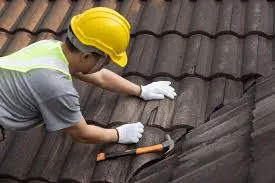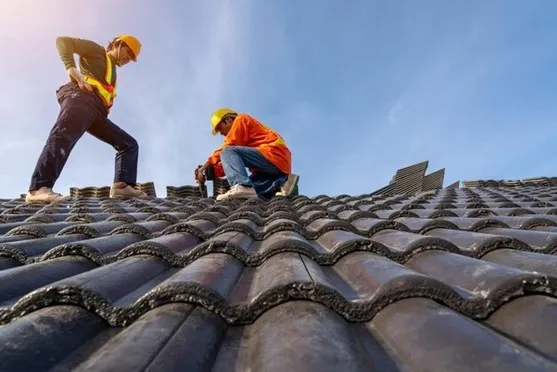Replacing a roof is a significant home improvement project that requires careful planning and execution. Whether due to age, weather damage, or leaks, a roof replacement can help maintain the structural integrity of a home and protect it from the elements. Homeowners often need clarification about what to expect during this process, especially since it can involve a substantial time and financial commitment. We will explore the stages of a roof replacement to help you understand what happens during each step and how a roofing contractor ensures a smooth process from start to finish.
Stages of a roof replacement
- Initial Consultation and Roof Inspection
The roof replacement process begins with an initial consultation with a roofing contractor and a thorough roof inspection. During this phase, the contractor evaluates the existing roof’s condition to determine the extent of the damage and whether a full replacement is necessary. They assess the materials used, the roof’s age, and any visible signs of deterioration, such as missing shingles, leaks, or sagging areas.
In addition to evaluating the roof’s surface, contractors check the structural integrity of the decking, flashing, and underlayment. This inspection allows them to identify potential issues impacting the replacement process, such as water damage or mold. The contractor provides material recommendations and discusses a project timeline based on the findings.
- Selecting Roofing Materials
Once the inspection is complete and the decision to replace the roof is made, the next step is selecting the roofing materials. Homeowners have several options, depending on their budget, aesthetic preferences, and the local climate. Contractors typically provide samples of different materials, such as asphalt shingles, metal roofing, or tiles, to help homeowners make an informed decision.
During this phase, homeowners can also choose the color, style, and durability of the materials, considering the roof’s long-term performance. The contractor advises which materials are best suited for the home’s design and the environmental conditions it will face. Selecting the right materials is crucial for ensuring the new roof provides the necessary protection and complements the house’s overall appearance.
- Preparing the Job Site
Before the roof replacement begins, the contractor and their team prepare the job site to ensure safety and efficiency. This involves protecting the home’s landscaping, walkways, and outdoor furniture. Contractors may use tarps and plywood to safeguard plants, shrubs, and other elements from debris that may fall during the process.
In addition to protecting the property, contractors set up safety equipment, such as scaffolding or ladders, and ensure that all necessary tools and materials are easily accessible. Proper preparation is essential for minimizing disruptions to the household and ensuring that the work proceeds smoothly. Homeowners may also be asked to make temporary arrangements to avoid parking vehicles near the house or clear out any outdoor items that could interfere with the project.
- Removing the Old Roof
Removing the old roof is one of the most critical steps in the replacement process. Contractors begin by tearing off the existing shingles, underlayment, and flashing, exposing the roof decking underneath. This step is often labor-intensive and can take a few hours to a day, depending on the size of the roof and the amount of material to be removed.
As the old roofing materials are removed, contractors inspect the roof decking for damage. If the decking shows signs of rot, water damage, or structural weakness, it must be replaced before the new materials can be installed. Addressing these issues at this stage is vital for ensuring the longevity and durability of the new roof.
- Installing the New Roof
Once the old roof has been removed and the decking has been inspected and repaired, the new roof installation begins. The contractor starts by applying a layer of underlayment, which acts as a moisture barrier and provides additional protection from the elements. Flashing is installed around vulnerable areas such as chimneys, vents, and skylights to prevent leaks.
Next, the chosen roofing materials, whether shingles, metal, or tiles, are laid over the underlayment, starting from the bottom and working upwards. This ensures that each layer overlaps properly, creating a tight seal against wind and water. Contractors pay close attention to details such as the alignment of the shingles and the placement of ventilation systems to ensure optimal performance.
The installation process can take anywhere from a few days to a week, depending on the size and complexity of the roof. During this time, contractors work systematically to complete each section while maintaining a clean and organized job site.
- Final Inspection and Cleanup
Once the new roof has been fully installed, the contractor performs a final inspection to ensure that every aspect of the job has been completed correctly. This includes checking for proper alignment, ensuring all the flashing is securely in place, and verifying that the ventilation systems function as intended. Any minor adjustments are made during this phase to ensure the roof meets the necessary standards.
After the inspection, the job site is thoroughly cleaned, and all debris, nails, and old roofing materials are removed. Contractors take special care to ensure that the surrounding areas are left in the same condition as before the project began. This final cleanup lets homeowners immediately enjoy their new roof without worrying about leftover mess or potential hazards.
A roof replacement is a significant undertaking that involves multiple steps, from the initial inspection to the final cleanup. Understanding each process phase can help homeowners feel more confident and prepared when embarking on a roof replacement project. We will explore how working closely with a roofing contractor ensures a seamless experience, from material selection to installation. With proper planning, communication, and professional expertise, a roof replacement can enhance any home’s value, safety, and appearance for years to come.


